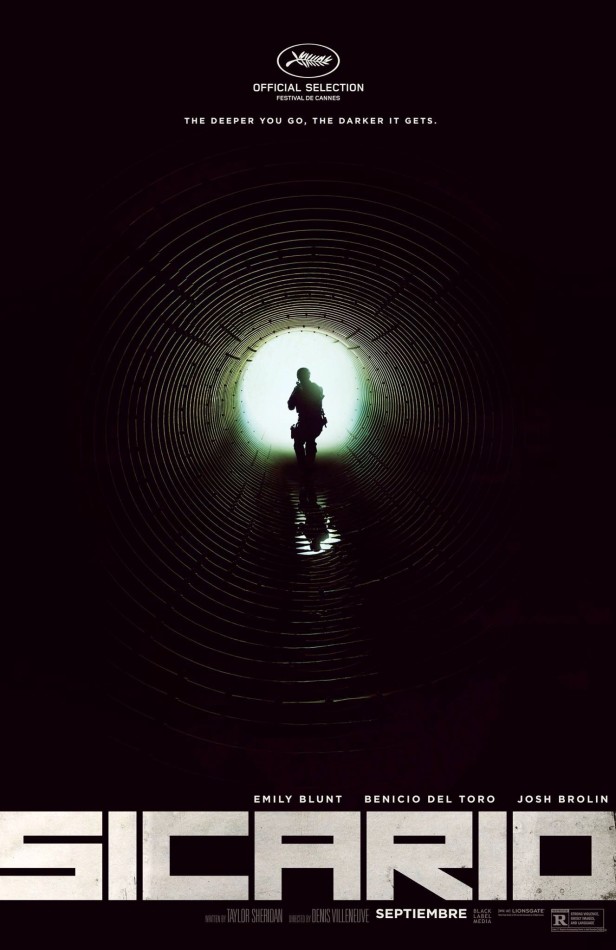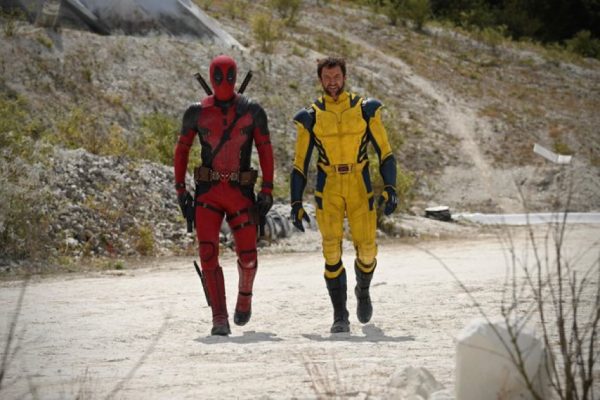Sicario Angers but in an Incredible Way
Denis Villeneuve’s latest, Sicario, is a Cobra: circling its prey, wrenching fear and the very breath from its audience’s throats before lashing out with fits of sudden, brutal violence. Opening with an FBI raid on a cartel member’s Arizona home, it doesn’t take long for the film to slip the clichéd bonds of a cinematic investigative procedural: a bullet reveals a blood-soaked corpse hidden behind the drywall, shrouded with plastic—the first of dozens—and Emily Blunt’s seemingly-capable agent Kate Macer is lulled into the “heart of an immense darkness.”
After volunteering to assist the secretive Man In Flip-Flops (Josh Brolin), Macer, under the impression that they’ll be operating in El Paso, is flown to the border. She is then immediately thrust into the extradition of a drug lord from Juárez. What unfolds is a traffic jam so tense that I was startled by a character’s mere cocking of his gun. Macer’s situation proceeds to only deteriorate further as she learns that matters she feels are black-and-white are, in her superiors eyes’, cast in shades of grey. (Literally, thanks to Cinematographer Roger Deakins’ use of thermal imaging.)
Macer also meets Benicio Del Toro’s shadowy, secretive operative before her first mission. It is he—and, to a lesser extent, Brolin’s seemingly affable yet ultimately pitilessly advantageous agent—who continually overpowers Macer through either physical force or deceit, delivering a punch to the face of any audience viewer to see Blunt’s heroine overcome the obstacles of Realpolitik in the name of Good.
Sicario‘s greatest fault is the overt use of Screenwriter Speak, with characters utilizing metaphor to an asinine extent. The film is certainly a visual marvel, Deakins’ cinematography almost expressionistic: armor-clad operatives descending beneath the blackened earth, into an under world stark against a hemorrhaging sky; a silhouetted blade emerging, advancing on the audience, from the cobalt entrance to a key tunnel—the setting of another extraordinary set piece.
The performances are uniformly immaculate: Del Toro and Blunt share a rigid intensity until the former is consumed by past heartache and the latter devalued by her colleagues, betrayed by her beliefs, whereas Brolin offers some twisted semblance of comic relief amidst the cynicism. Jóhann Jóhannsson’s score couldn’t be more perfect—a stone-cold heartbeat that seems to emanate from Blunt herself.
In Sicario, Villeneuve takes the audience’s surrogate and drops her into a situation and a group characterized by apathy, be it in terms of each other, the people and the nation of Mexico, the War on Drugs itself—all they care about is the short-term solution. It harkens back to Zero Dark Thirty but couldn’t be more different in its presentation of a war fought in the shadows: one depicts the tattering of a soul but the apparent victory of a nation, the other corrodes a soul, a mentality, and takes the nation along with it.













